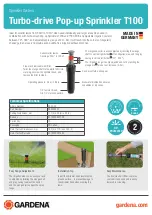
C-Nav Hardware Reference Guide
98
Receiver Independent Exchange (RINEX)
is a set of standard definitions and formats
designed to be receiver or software manufacturer independent and to promote the free
exchange of GPS data. The
RINEX
file format consists of separate files, the three most
commonly used are:
Observation (.YYo) file,
Navigation (.YYn) file,
Meteorological (.YYm) files;
Where YY indicates the last two digits of the year the data was collected.
Reference station
a reference station collects GPS data for a fixed, known location. Some of
the errors in the GPS positions for this location can be applied to positions recorded at the same
time by roving receivers which are relatively close to the reference station. A reference station is
used to improve the quality and accuracy of GPS data collected by roving receivers.
Right Hand Circular Polarization (RHCP)
is used to discriminate satellite signals. GPS signals
are RHCP.
Root Mean Square (RMS)
is a measurement of precision also applicable for horizontal stations.
Probability for RMS is 68.3%, meaning that if 100 observations are made, 68 of them will be
within the root mean square, 1 standard deviation.
Rover
is any mobile GPS receiver and field computer collecting data in the field. A roving
receiver’s position can be differentially corrected relative to a stationary reference GPS receiver
or by using GPS orbit and clock corrections from a SBAS such as C-Nav.
Roving Receiver
see rover
Satellite Based Augmentation System (SBAS)
this is a more general term, which
encompasses WAAS, C-Nav and EGNOS type corrections.
Satellite Constellation
is the arrangement of a set of satellites in space.
Satellite Message
is sometimes referred to as the Data (D) code. A low-frequency (50 Hz)
stream of data on both carriers (L1 and L2) of the satellite signal. The stream of data is
designed to inform the user about the health and position of the satellite. The satellite message
can be decoded by the receiver and used for positioning in real time.
Selective Availability (S/A)
is the deliberate degradation of the GPS signal by encrypting the
P-code and dithering the satellite clock. When the US Department of Defense uses S/A, the
signal contains errors, which can cause positions to be inaccurate by as much as 100 meters.
Signal-to-Noise Ratio (SNR)
is a measure of a satellite’s signal strength.
Single Difference
between receivers is the instantaneous difference in the complete carrier
beat phase measurements made at two receivers simultaneous observing the same signal.
Single-frequency
is a type of receiver that only uses the L1 GPS signal. There is no
compensation for ionospheric effects. The C-Nav1010 is a single frequency receiver.
Space Segment
is the portion of the GPS system with major components in space (e.g.,
satellites).
Space Vehicle (SV)
a GPS satellite.
Spread Spectrum Radio (SSR)
is a radio that uses wide band, noise like (pseudo-noise)
signals that are hard to detect, intercept, jam, or demodulate making any data transmitted
Содержание 1000
Страница 1: ...DGNSS Systems Hardware Guide www cnavgnss com ...
Страница 20: ...C Nav Hardware Reference Guide 20 Figure 2 3 C Nav Antenna Mounting Pole Dimensions ...
Страница 61: ...C Nav Hardware Reference Guide 61 Figure 3 61 C NaviGator II rev A front USB port model Outline Diagram mm ...
Страница 65: ...C Nav Hardware Reference Guide 65 Model No 3402 17 0070 Specifications ...
Страница 67: ...C Nav Hardware Reference Guide 67 Huber Suhner Lightning Protector Mounting Instructions ...
Страница 68: ...C Nav Hardware Reference Guide 68 ...
Страница 69: ...C Nav Hardware Reference Guide 69 MOXA Converters TCC 80I TCC 80I Specifications ...
Страница 70: ...C Nav Hardware Reference Guide 70 TCC 80I Dimensions Figure 4 3 Moxa TCC 80I Converter Dimensions TCC 82 ...
Страница 72: ...C Nav Hardware Reference Guide 72 Times Microwave LMR400 Coaxial Cable LMR400 Specifications ...
Страница 74: ...C Nav Hardware Reference Guide 74 ...


































